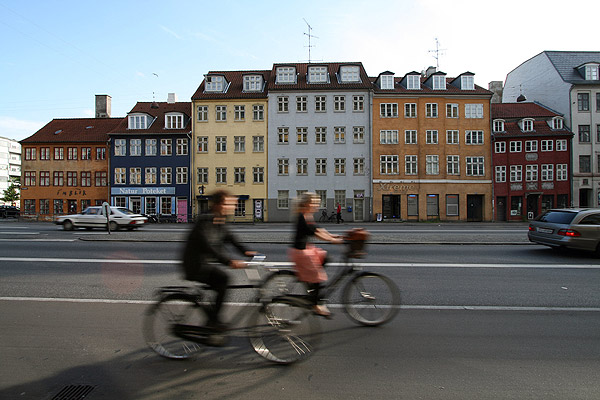
Thanks to Euro 2012, I've finally started to become interested in and determined to learn about soccer. I played soccer as a kid, but in an achingly defensive 5-3-2 formation; I was stuck back at fullback, because I was good at stopping the ball and getting rid of it quickly so as not to embarrass myself. It wasn't much of an introduction to the sport. Like a lot of Americans, I played it but didn't learn it, which meant I never became a fan.
The first book I've ever read about soccer I started yesterday: Brilliant Orange: The Neurotic Genius of Dutch Football by David Winner. It's sort of about tactics, which I'm trying to learn; it's sort of about Dutch soccer culture, which gives the tactics a frame; and it's sort of about cultural aesthetics and history, which gives me a metaphorical bridge to the sport. The gist of it is that the revolutionary Dutch approach to football—Total Football, which, broadly speaking, was invented by the Dutch team Ajax in the 1970s and imported by Ajax star Johan Cruyff to Spain—has its roots in Dutch culture.
To put Total Football in perspective, it's a bit like the soccer equivalent of the west coast offense in football, with an emphasis on short passing, quickness, opening up space, perfect timing, and anticipating movement. Ajax was sort of the 49ers of Total Football, and it was about as revolutionary a shift in the sport.
It's Winner's contention that the Dutch obsession with space fed into the creation of Total Football. He could be accused of sometimes pushing his thesis too far, but it's an interesting way of thinking about the sport, and leads to wonderful asides about Dutch history. For instance:
Since World War II, the Dutch have put their faith in a series of national plans, the Riumtelijke Ordeningen, or National Spacial Planning Acts. These are a little like the old Soviet Five-Year Plans, except that they are concerned solely with the use of space and they lay down a blueprint to be followed by every local and municipal authority in the Netherlands. Maartin Hajer, professor of public policy at Amsterdam University, explains that the Dutch have been developing their planning doctrines since the twelfth century. 'We tend to think we invented the idea of land-use planning. Our problems with water meant we had to take collective political action in order to be able to build dikes. We always say that the origin of Dutch democracy lies in this co-operative dike-building.'
They've literally been dividing up the same small bit of land for centuries. They ought to be good at it by now. And for years, Amsterdam was the gold standard for bike-friendly cities. Now it's probably Copenhagen, and the mayor of Copenhagen is proud of having outpaced the Dutch (though the Netherlands still seems to have a higher percentage of bike trips):
Amsterdam used to be the international cycling city. How do you feel about Amsterdam losing its glory?
‘We used to say that we were in friendly competition with Amsterdam. But with elections round the corner, I’d say: we’ve caught up with Amsterdam.’
And it's Copenhagen where Aldermen Dowell, Pawar, and Osterman, along with a couple CDOT reps, just went on a transportation fact-finding trip.
During the ascent of the automobile following World War II, cycling rates actually began to drop in Denmark and the Netherlands, as well as bike-friendly Germany. But the countries reversed the decline by moving quicky to improve cycling infrastructure as an aspect of sustainability:
Some readers might assume that bicycling levels in Europe have been consistently high. In fact, cycling fell sharply during the 1950s and 1960s, when car ownership surged and cities started spreading out. From 1950 to 1975, the bike share of trips fell by roughly two-thirds in a sample of Dutch, Danish and German cities, from 50%–85% of trips in 1950 to only 14–35% of trips in 1975 (Dutch Bicycling Council, 2006)…. During that 25-year period, cities throughout the Netherlands, Denmark and Germany focused on accommodating and facilitating increased car use by vastly expanding roadway capacity and parking supply, while largely ignoring the needs of pedestrians and cyclists (Hass-Klau, 1990).
In the mid-1970s, transport and land-use policies in all three countries shifted dramatically to favour walking, cycling and public transport over the private car. The policy reform was a reaction to the increasingly harmful environmental, energy and safety impacts of rising car use (Hass-Klau, 1990; Pucher, 1997; European Conference of the Ministers of Transport, 2004; Dutch Bicycling Council, 2006). Most cities improved their bicycling infrastructure while imposing restrictions on car use and making it more expensive. That policy reversal led to turnarounds in the previous decline of bike use. From 1975 to 1995, the bicycling share of trips in the same, previously cited sample of Dutch, Danish and German cities rose by roughly one-fourth, resulting in 1995 bike shares of 20–43%…. The rebound in cycling from 1975 onward was not enough to offset the huge declines from 1950 to 1975. Nevertheless, it was a significant accomplishment and provides evidence of the powerful impact of policy on travel behaviour. It is especially impressive given continuing growth in per-capita income, car ownership and suburban development in all three countries over the past three decades.
The Dutch and the Danes have long had a cultural attachment to the bike that Americans have never shared. But as Europe remade itself after the Second World War, that began to give way to the car; only through specific, ambitious central planning were the countries able to preserve their transportation culture. It's taken longer here, but not only do we not have the same history of cycling, we don't have the centuries of urban-planning experience.
Related: Jan Gehl, the most prominent of Danish urban planners:
Photograph: Stig Nygaard (CC by 2.0)


